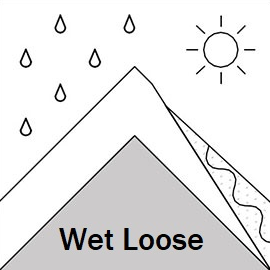Gudauri
Natural avalanches are unlikely, human-triggered avalanches are possible. Small avalanches in specific areas, or large avalanches in isolated areas.
The wind slabs formed during the last storm have started to settle with milder temperatures, but recent winds may have created fresh wind slabs. Avoid steep, unsupported eastern slopes. Be also cautious on slopes with shallow snowpacks, as there are buried crust/facet combinations that may react to skiers. Slopes on the east, south and west aspects will also see much radiation tomorrow, increasing the likelihood of wet avalanches on steep, sun-exposed slopes in the afternoon.
Forecast issued at: 9 February 2024 21:00
Forecast valid until: 11 February 2024 21:00
Forecaster: Peter S
High Alpine
> 2600m
2 Moderate
Heightened avalanche conditions on specific terrain features. Evaluate snow and terrain carefully; identify features of concern.
Alpine
2000m - 2600m
2 Moderate
Heightened avalanche conditions on specific terrain features. Evaluate snow and terrain carefully; identify features of concern.
Sub Alpine
< 2000m
2 Moderate
Heightened avalanche conditions on specific terrain features. Evaluate snow and terrain carefully; identify features of concern.
Avalanche Problems
Wind Slab

Wind slabs formed during and after 7 February may remain reactive to skiers, especially in the high alpine near ridges. Smaller wind slabs may have formed during periods of winds on Feb 9. Avoid steep and unsupported eastern slopes and keep in mind potential cross-loading on other aspects than indicated.
| Sensitivity | The specific avalanche problem type is reactive to human rider triggers. Easy to trigger with ski cut. |
| Distribution | Specific areas, with common characteristics. Evidence for instabilities exists, but it is not obvious and finding it requires careful observations. |
| Time of Day | All day |
| Trend | Improving |
| Confidence | Moderate |
Persistent Slab

Weak, facetted snow layers have been observed in the region at all elevation bands, around buried crusts and in areas with shallow snow depth. If these weak layers have enough dense snow above them, medium (sz 2) and possibly large (3) avalanches could be triggered. While the problem is worse in the north of the region where the snow is shallower than south of the main range (pass), we also have recent evidence of crust/facet combinations on southern-southeastern aspects below 2200. Be cautious in shallower snowpacks, and take "whumpfs" as a clear sign of instability - and the presence of a weak layer that can easily be triggered in steeper terrain.
| Sensitivity | The specific avalanche problem type is difficult to trigger with a human rider. |
| Distribution | Many locations. Evidence for instabilities is frequently found, in many locations. |
| Time of Day | All day |
| Trend | No change |
| Confidence | Moderate |
Loose Wet

Mild temperatures and direct solar radiation increase the likelihood of small wet-loose avalanches, both skier-trigger and natural, especially from mid-day onwards and in the afternoon.
| Sensitivity | The specific avalanche problem type is reactive to human rider triggers. Easy to trigger with ski cut. |
| Distribution | Specific areas, with common characteristics. Evidence for instabilities exists, but it is not obvious and finding it requires careful observations. |
| Time of Day | All day |
| Trend | Deteriorating |
| Confidence | Moderate |
Recent Avalanches and Snowpack
Recent avalanche activity: 8 February - several small (size 1) loose wet avalanches on west side of Sadzele 7 February - multiple size 2 - 3 wind / storm slab avalanches seen Lomisa - Miketi ridgeline, E aspects 2100 - 2300m. 4 February - size 1 wind slab near Sioni valley, 2000m, N aspect - failed on weak snow near the ground.
Glide slabs continue to be active on multiple aspects below about 2600m, some up to size 2.
Snowpack: 40 - 50 cm of new snow fell on Tuesday 7th, with W winds at high elevations. The wind slabs formed during this storm have largely settled but may remain active on steep slopes. Melt-freeze crusts can be found at lower elevations and sunny aspects, and there can be weak snow layers around these crusts. In northern areas (North of Kobi Valley), the snowpack is thinner and critical weaknesses around crusts and at the ground have been found. Watch out for weak, sugary (faceted) snow in areas where the snow is shallow and crust/facet layers. Check out recent snow profiles (or add your own!) at snowpilot.org
Weather
Saturday 9 Feb and Sunday 10 Feb bring mild weather, with clear skies, sun and maximum temperatures of -1 to 0 degrees at 2200 m. Winds are forecasted low from the N-NW.
Disclaimer
Our avalanche forecasters are internationally qualified and experienced professionals, and data is provided by skilled observers. We encourage you to make your own observations and decisions, without relying solely on our forecast, since any forecast is a generalised 'best guess', and in certain cases it might be inaccurate. We can not be held liable for any actions you take in the backcountry that may result in injury, loss or death.